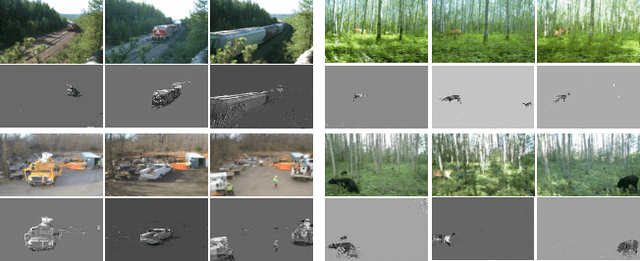Moving Object Detection under Discontinuous Change in Illumination Using Tensor Low-Rank and Invariant Sparse Decomposition
Paper and Code
Apr 08, 2019



Although low-rank and sparse decomposition based methods have been successfully applied to the problem of moving object detection using structured sparsity-inducing norms, they are still vulnerable to significant illumination changes that arise in certain applications. We are interested in moving object detection in applications involving time-lapse image sequences for which current methods mistakenly group moving objects and illumination changes into foreground. Our method relies on the multilinear (tensor) data low-rank and sparse decomposition framework to address the weaknesses of existing methods. The key to our proposed method is to create first a set of prior maps that can characterize the changes in the image sequence due to illumination. We show that they can be detected by a k-support norm. To deal with concurrent, two types of changes, we employ two regularization terms, one for detecting moving objects and the other for accounting for illumination changes, in the tensor low-rank and sparse decomposition formulation. Through comprehensive experiments using challenging datasets, we show that our method demonstrates a remarkable ability to detect moving objects under discontinuous change in illumination, and outperforms the state-of-the-art solutions to this challenging problem.
 Add to Chrome
Add to Chrome Add to Firefox
Add to Firefox Add to Edge
Add to Edge